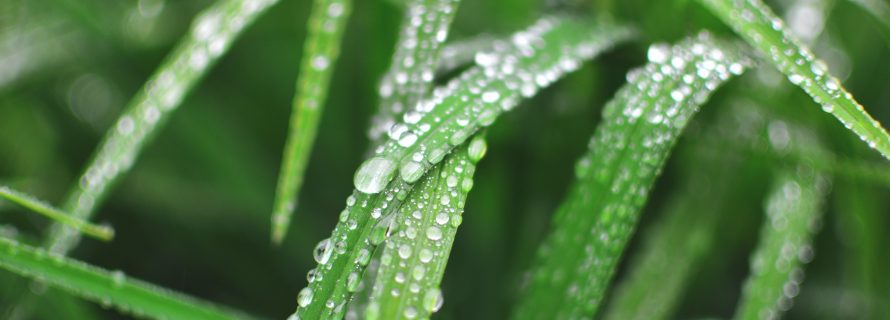How to Better Protect Your Yard from Moisture and Water Damage

Water and moisture damage can be devastating to your yard. When water builds up, it can destroy your landscaping, create dangerous potholes, and damage the exterior of your home. Water damages can be costly, too.
As with most things, the best treatment for water damage is to prevent it from happening in the first place. If you take a proactive stance and focus on protecting your yard rather than waiting for problems to arise, you’ll be much better prepared for any storm that comes your way.
Here are eight straightforward ways to protect your yard from moisture and water damage.
#1: Re-Imagine Your Yard’s Design
Is your yard completely flat? If so, consider changing it to a sloping design. A sloped landscape helps move water down and away from your property rather than allowing it to pool in place.
You’ll want to hire an expert to come and help with this because grading your own yard can be a challenge. However, swapping up your yard’s design could be the simplest solution for protecting your yard and home from damage.
#2: Invest in a Yard Drainage System
There’s no shortage of drainage options for your yard. There are French drains, trench drains, driveway drainage systems, and more.
One of the most common is the French drain. Essentially, a long pipe is buried beneath your yard, and it catches and directs any water away from your property. Do a little digging and find a drainage system that makes sense for your area.
#3: Swap Your Garden out for a Rain Garden
If you’re already a gardener, this is a perfect solution for you. Rain gardens are designed in a bowl shape in the ground. Their purpose is to collect and absorb rainwater to avoid water damage and combat pollution.
The soil and plants in rain gardens tolerate and need lots of water to thrive, making them perfect for combatting water build-up.
#4: Try Permeable Paving
Permeable pavers are a type of porous paving that replaces traditional concrete pavers. These pavers are scientifically-engineered to allow water to absorb into the earth in a natural way.
In traditional concrete, water has to evaporate, which can take a long time. In permeable pavers, the water absorbs into the pavers, which helps keep water from building up around your yard.
#5: Add Rain Barrels
Rain barrels are a terrific solution if you live in an area that’s prone to flooding. You place rain barrels beneath downspouts and collect rainwater. Once the water is in the rain barrel, you can redirect it away from your property, or you can save it and use it to water your plants.
#6: Plant Grass and Add Mulch
Grass naturally has deep roots. These roots allow it to absorb and carry water into the ground much faster than plain old soil can. If you don’t have grass, consider planting some. While it won’t completely prevent water damage, when combined with other tricks on this list, it can help combat water damage and build up.
Mulch (that stuff you see in flower gardens) can soak up and absorb water, too. However, if you live in an area with heavy rains, you’ll want to purchase heavier mulch that won’t move around, like a hardwood mulch.
#7: Keep an Eye on Your Gutters
It’s not uncommon for gutters to get clogged or start malfunctioning. Gutters are supposed to take water and direct it away from your house. However, if there’s something wrong with them, they can actually cause more severe issues than they prevent.
Watch your gutters during the rain to make sure they’re working correctly and not causing flooding.
#8: Change Your Habits
Once you have some preventative solutions in place, it’s also important to reevaluate your habits. Keep an eye on overwatering your yard. Wash your car at the car wash instead of at home. Don’t splash around too much in your swimming pool.
Sometimes you can prevent the most damage by changing up your habits.
Prevent Water Damage in Your Yard
These eight solutions are some of the ways you can fight moisture and water damage in your yard. Some of them are simple swaps, while others require a bit more work. However, as long as you put some effort towards protecting your yard, you’ll be well on your way to preventing water and moisture damage in the future.
About The Author: Matt Lee is the owner of the Innovative Building Materials blog and a content writer for the building materials industry. He is focused on helping fellow homeowners, contractors, and architects discover materials and methods of construction that save money, improve energy efficiency, and increase property value.
Photo by Nikolay Zakharov on Unsplash
- Additions and New Construction
- All Exteriors
- Alterations
- Basements
- Bathrooms
- Customer Service
- Customer Stories
- Decks
- Design & Planning Show
- DIY
- Doors
- Educational Resources
- Extreme Makeover Home Edition
- Fashion Show
- General Remodeling
- Green Living
- Handyman Home Services
- Home Decor
- Home Entertainment
- Home Improvement
- Home Improvements
- How to Tips
- In The Community
- Kitchens
- Off-the-Wall Remodeling Stories
- Remodeling
- Resources
- Roofing
- Siding
- Social Media
- Sunrooms
- Tips & Tricks
- Trends
- Windows

